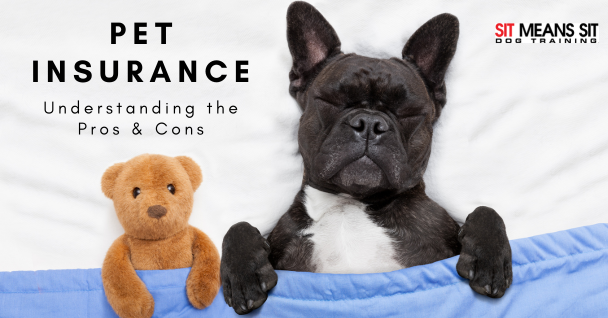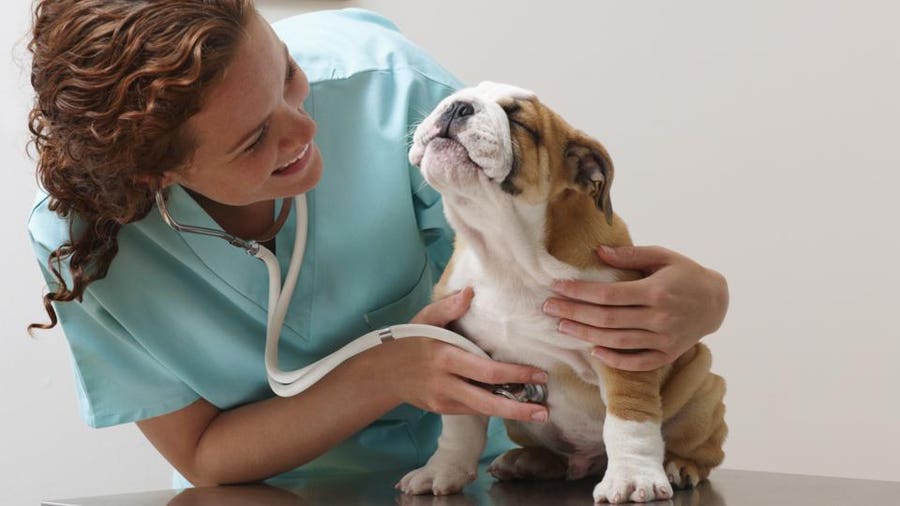As a pet owner, you want to ensure your furry companion receives the best possible care in case of any unexpected accidents or illnesses. However, veterinary costs can be expensive and may put a strain on your finances. This is where pet insurance comes in – providing financial protection and peace of mind for both you and your beloved pet. With numerous pet insurance providers and policies on the market, it can be overwhelming trying to choose the right one. In this comprehensive guide, we’ll delve into the various types of pet insurance coverage, highlighting their key features, benefits, and potential drawbacks. By comparing coverage options and understanding your own needs, you’ll be well-equipped to make an informed decision and choose the best pet insurance plan for your furry friend.

Pet Insurance Policy Comparisons
Pets are more than just animals; they are part of our families. Just like humans, they can get sick or injured unexpectedly and require medical attention. This is where the importance of having a pet insurance policy comes into play. Pet insurance can help cover the cost of unexpected veterinary expenses, allowing you to focus on your pet’s health rather than worrying about the financial burden. However, with so many pet insurance providers and policies available, it can be challenging to determine which one is the best fit for your pet. Let’s take a closer look at the different types of pet insurance coverage and compare their features, benefits, and drawbacks.
Accident-Only Coverage
Accident-only coverage is the most basic and affordable type of pet insurance. As the name suggests, it only covers accidents and injuries, such as broken bones, lacerations, sprains, foreign body ingestion, and poisoning. This type of coverage does not include illnesses or chronic conditions. Accident-only coverage is typically the cheapest option and can provide some level of financial protection in case of unexpected accidents. However, it is essential to note that accidents are not the most common reason for a pet to visit the vet. According to a survey by the North American Pet Health Insurance Association (NAPHIA), only 7% of claims submitted were for accidents, while 93% were for illnesses.
| Pros | Cons |
|---|---|
| Affordable | Limited coverage |
| Provides financial protection | Does not cover illnesses or chronic conditions |
| May not be suitable for pets prone to chronic conditions |
In summary, accident-only coverage may be a suitable option for pet owners who are looking for a basic and budget-friendly plan to cover their pet in case of unexpected accidents. However, it is important to keep in mind that this type of coverage does not include illnesses or chronic conditions, which are more common reasons for pet visits to the vet.
Accident and Illness Coverage
Accident and illness coverage is a more comprehensive insurance policy that covers both accidents and illnesses. This type of coverage includes everything under accident-only coverage, as well as expenses related to illnesses such as infections, allergies, and cancer. It also covers chronic conditions, which require ongoing treatment and management. Accident and illness coverage can provide a higher level of financial protection compared to accident-only coverage, but it comes at a higher cost.

| Pros | Cons |
|---|---|
| Comprehensive coverage | More expensive than accident-only coverage |
| Covers accidents and illnesses | May not cover pre-existing conditions |
| Includes chronic conditions | Waiting periods may apply |
It is important to carefully review the terms and conditions of an accident and illness policy, as some may not cover pre-existing conditions or have waiting periods before coverage begins. Additionally, the cost of premiums for this type of coverage may vary depending on factors such as your pet’s age, breed, and overall health.
Wellness Coverage
Wellness coverage, also known as routine care coverage, is an add-on option that covers preventive and routine care expenses, such as vaccinations, annual check-ups, and dental cleanings. This type of coverage is not included in accident-only or accident and illness policies and usually comes at an additional cost. While wellness coverage can help offset the cost of routine vet visits, it may not be necessary for every pet owner. Some pet insurance providers offer this coverage as a separate plan, while others include it as an optional add-on to their accident and illness policy.
| Pros | Cons |
|---|---|
| Covers preventive and routine care | Additional cost on top of accident and illness coverage |
| May include discounts on certain services | May not be necessary for every pet owner |
| May not cover all routine care expenses |
If you are considering adding wellness coverage to your policy, make sure to review the specific services and costs covered under the plan. It may not cover all routine care expenses, and some services may have a limit or cap per year.
Choosing the Right Coverage for Your Pet

When comparing pet insurance policies, it is essential to consider your pet’s unique needs and potential health risks. Here are some factors to keep in mind when choosing the right coverage for your furry friend:
- Age: Just like humans, older pets are more prone to health issues and may require more coverage.
- Breed: Certain breeds are predisposed to specific health conditions, which may require more extensive coverage.
- Pre-existing conditions: If your pet has pre-existing conditions, make sure the policy covers them, or consider getting a policy with limited coverage for those conditions.
- Lifestyle: Active pets who spend a lot of time outdoors may have a higher risk of accidents, while indoor pets may be more susceptible to illnesses.
- Budget: Consider how much you can afford to pay for premiums and potential out-of-pocket expenses.
It’s also essential to read the policy’s fine print and ask questions to ensure you fully understand the coverage, exclusions, waiting periods, deductibles, and reimbursement rates.
Pet Insurance Providers Comparison
Now that we have discussed the different types of pet insurance coverage, let’s take a look at some popular pet insurance providers and compare their policies, features, and premiums. Please note that this is not an exhaustive list, and there may be other providers in your region that offer pet insurance.
- Healthy Paws
Healthy Paws is a highly-rated pet insurance provider in the US, offering both accident and illness coverage and wellness coverage as an add-on option. Their policies cover up to 90% of eligible veterinary expenses, with no annual or lifetime limits. Healthy Paws also has a fast claims process, often reimbursing claims within two days. However, they do not cover pre-existing conditions, so it is important to enroll your pet while they are young and healthy.
| Policies | Accident and Illness Coverage |
|---|---|
| Benefit limits | Unlimited |
| Deductible options | $100, $250, $500 |
| Reimbursement rate | Up to 90% |
| Exclusions | Pre-existing conditions |
| Waiting periods | 15 days for accidents, 12 months for hip dysplasia |
Annual premiums for Healthy Paws start at $15 per month for cats and $20 per month for dogs, with the option to customize deductible and reimbursement rates to fit your budget.
- Trupanion
Trupanion is another top-rated pet insurance provider in the US, offering comprehensive accident and illness coverage with unlimited benefits and no payout limits. They also cover hereditary and congenital conditions, which may not be covered by other providers. Trupanion also offers a 90% reimbursement rate and has a fast claims process.
| Policies | Accident and Illness Coverage |
|---|---|
| Benefit limits | Unlimited |
| Deductible options | Customizable |
| Reimbursement rate | Up to 90% |
| Exclusions | Pre-existing conditions, routine care |
| Waiting periods | 5 days for accidents, 30 days for illnesses |
Annual premiums for Trupanion start at $19 per month for cats and $26 per month for dogs, with customizable deductibles based on your preferences.
- Petplan
Petplan is a popular pet insurance provider in the US, offering accident and illness coverage, as well as wellness coverage as an add-on option. Their policies have unlimited benefits and no payout limits, with up to 80% reimbursement rates. Petplan also covers alternative treatments, such as acupuncture, chiropractic care, and hydrotherapy.
| Policies | Accident and Illness Coverage |
|---|---|
| Benefit limits | Unlimited |
| Deductible options | $100 – $1,000 |
| Reimbursement rate | Up to 80% |
| Exclusions | Pre-existing conditions, wellness coverage |
| Waiting periods | 5 days for accidents, 15 days for illnesses |
Annual premiums for Petplan start at $16 per month for cats and $29 per month for dogs, with the option to customize deductible and reimbursement rates.
Conclusion

Choosing the right pet insurance policy requires careful consideration of your pet’s needs and potential risks, as well as comparing coverage options and premiums from different providers. While accident-only coverage may be a suitable option for budget-conscious pet owners, it may not provide enough coverage for most pets’ health needs. Accident and illness coverage is a more comprehensive option, but it comes at a higher cost. Adding wellness coverage as an optional add-on can provide additional financial protection for routine care expenses. When comparing pet insurance policies, make sure to read the fine print and ask questions to ensure you understand the coverage, exclusions, deductibles, and reimbursement rates. With the right coverage in place, you can have peace of mind knowing that your beloved pet will receive the best possible care, no matter what happens.
wfriv.xyz